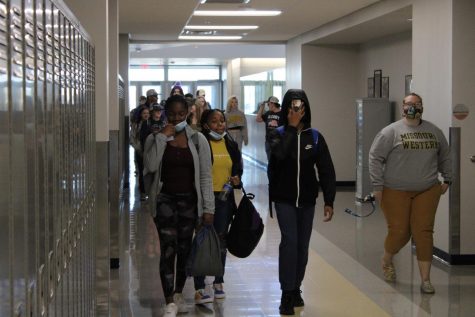Managing Hallway Behavior
December 31, 2021
Hallway behavior has become a major distraction. It has become a trend of students not getting to class on time and that has been caused by crowds and antics in the hallways. The actions in the hallways have gotten out of control and the school and staff must look for solutions.
According to educationworld.com “Maintaining control as students congregate and socialize in crowded areas can present a problem…”
Especially after lunch the hallways are loud and full of kids who don’t go straight to class and teachers have to spend their lunch break handling students. Other schools around the country have used various options to keep hallways manageable.
“Everyone deserves a lunch break. To ensure that our staff members had time to eat their lunches without supervising students, we enlisted the assistance of a core of adult volunteers…” (educationworld.com).
Though every teacher needs a lunch break, having outside members inside the school can be unsafe and unrealistic, instead we can find ways to make better use of our hallways.
“Among the many problems that cause the congestion, we have a massive student body, lockers in inconvenient positions, and people acting rowdy in the halls,” (southlakessentinel.com).

Many students don’t even use their lockers, if we made them smaller or only in specific areas it might free up some hallway space in the building. Lockers clog up the hallways and if we have either smaller ones or moved them to another location it would help the buildup in the hallway. Teachers also shouldn’t punish students by limiting hall passes.
According to the warriorledger.com “The New Health Advisor posted an article that said ‘the average person urinates 8-10 times a day or more if drinking caffeine or excessive liquids.’ Eight to ten times a day, unless drinking caffeine, drinking caffeine is almost a hobby for high school students,”
During class some students leave and spend a long time out of class either going to the restroom or visiting a teacher for help. This can cause teachers to be hesitant to sign passes, but students cannot control when they need to go to the restroom.
Teachers should not limit hall passes unless it is an excessive amount, for example more than twice in one class. Students can go during passing time, but the lines in the bathroom get long and it’s difficult to get to class on time after using the restroom.
To manage hallway behavior, teachers should explain to students the importance of a structured learning environment and how their actions can massively affect it, instead of punishing them by not letting them out of class.



